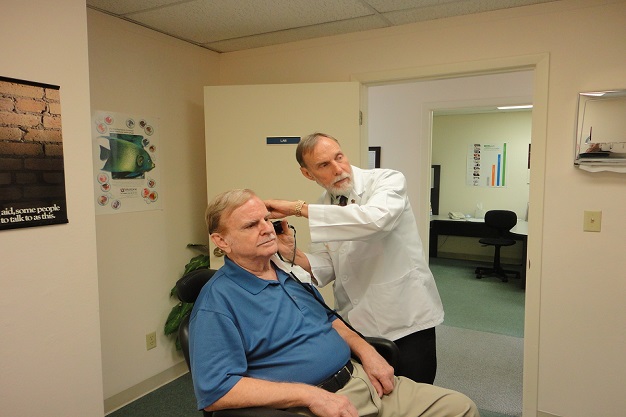Different types of hearing tests and assessments

Are you suffering from hearing loss? It’s important to book a hearing test so you can check your ear health and find a solution for your hearing problems.
You will need to consult with an audiologist so that the right hearing test can be recommended to determine how you can hear different sounds and pitches correctly. Through these tests, you can find out the severity of your hearing loss and what you can do about it.
Do you need a hearing test?
If you or your family members have hearing problems, regardless of age, you should test your hearing. It’s a non invasive process as a hearing test measures your ear health and helps determine your hearing threshold as well as ability to distinguish sounds.
Some signs of hearing loss are:
- Ringing in your ears
- People complain that your volume is too loud when you’re watching TV or listening to music
- You might be asking people to repeat themselves in conversations
- You might find it hard to hear conversations and general speech
Types of hearing tests
There are different tests that an audiologist can use to measure and determine hearing loss. No matter your age, it’s important to disclose your hearing history and noise tests from your past. Your response when you hear sounds in each test will help the doctor to prescribe the right treatment for you. Below are some hearing tests that are commonly recommended for adults and children.
Hearing tests for Adults:
Pure tone audiometry
This test uses a machined called an audiometer to measure hearing loss within your inner ear, whilst also testing your middle ear. This is the most common type of hearing test. Other tests that measure your hearing nerve pathways are measured through the Auditory Brainstem Response (ABR) and Hair cells in your inner ear are measured with Otoacoustic Emissions (OAEs). For a pure tone test, you will need to wear headphones as you will respond to a range of sounds at different frequencies, regardless of whether you can hear the sounds clearly or not.
Speech audiometry
This type of test detects hearing loss in adults. It uses speech sounds instead of pure tones to measure how your ears react to soft sound. This test gages how you respond to the faintest speech and you will be asked to repeat what you’ve heard to determine how you understand them. You’ll be able to hear the softest sounds at different pitches, which will also determine your hearing threshold.
Tympanometry
Your audiologist might want to test your middle ear through tympanometry. For this middle ear test, a soft rubber tip that emits sounds and air pressure changes will be placed inside your ear canal to test its ability to transfer sound to your inner ear efficiently. This is an excellent part of a hearing test to measure the health of your middle ear and eardrum.
Hearing tests for children:
Visual reinforcement audiometry
Visual Reinforcement Hearing Tests are recommended for babies old enough to sit and for children under three. The main objective of this hearing test is to get the baby to respond to a sound with a visual reinforcement aid. The baby is conditioned to respond by turning their head toward an illuminated puppet when they hear a sound. The baby’s response is measured and health of both or each of the ears can be determined if they can wear headphones.
Play audiometry
This hearing test is recommended for children aged between 3-5 years. It consists of the children wearing headphones and measures the child’s response to certain sounds by repeating them aloud or pointing at them. This also tests the health of middle ear and how it’s working.
Understanding your hearing test results
When you’ve completed all the tests, your audiologist will discuss the hearing evaluation and your results with you. The results are presented in a graph called an audiogram and is uses decibels (dB) to measure your level of hearing loss.
- Normal hearing is between 0 to 25 dB
- Mild hearing loss is between 26 to 40 dB and sounds may just be soft
- Moderate hearing loss is between 41 to 55 dB and speech is difficult to hear, especially when there’s background noise
- Moderate to severe hearing loss is between 56 to 70 and regular speech is difficult to hear
- Severe hearing loss is between is between 71 to 90 dB and you can’t hear ordinary noises
- Profound hearing loss is between 91 to 100 dB and you may not hear loud noises at all, which might mean that you need to acquire a hearing aid to help you hear better
Through these results it helps the audiologist determine your hearing threshold level and recommend the right treatment for you.
Experiencing hearing loss? Book your hearing test today
If you have a hearing problem and need to get your hearing checked, look no further than ACE Audiology. Our team can help you with hearing tests and finding the right treatment that suits you.
Get in touch with our team through our website if you need more information, or call our Bulleen Clinic on (03) 9850 8888 or our Ivanhoe Clinic on (03) 9440 9409 so we can help you as soon as possible.
